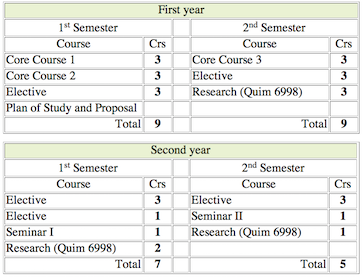About the Graduate Program
The Ph.D. Program in Applied Chemistry started at the University of Puerto Rico – Mayagüez Campus in January 2004. The Program was approved by the Puerto Rico Council on Higher Education on December 18, 2003 through certification #2003-191. The Program currently has about 55 students progressing towards the Ph.D.
Our Program supports the mission of the University of Puerto Rico by developing graduate students with knowledge and skills in areas of importance to Puerto Rico’s economic development. The emphasis of our research is in Biophysical Chemistry, Environmental Chemistry, and Chemistry of Materials. Our Program graduates will have strong communication skills to allow them to participate in the search for solutions to the problems that our society faces, and to promote the development and transfer of technology needed for economic development.
A total of 62 students have already earned their Ph.D’s and an average of 10 students complete their respective Ph.D. or M.S. degrees each year. All Program graduates have been employed or are continuing postdoctoral work.
Graduate students typically receive financial aid throughout their graduate study in the form of teaching assistantships, graduate fellowships and research appointments. Graduate fellowships and research appointments allow students to dedicate full time to their Ph.D. studies.
Our Ph.D. Program is unique in various aspects. The Program requires a Practicum in a research laboratory outside of our University. The Practicum increases the student’s knowledge and skills in the chosen area of specialty and develops their communication and work skills through exposure to multiple research groups. The Program has unique courses such as QUIM 6705 Supervised Teaching of Chemistry and QUIM 8008 – Scientific Communication in Chemistry that helps to improve the students’ communication skills. The Program is also unique in emphasizing entrepreneurism through a graduate level in the School of Business Administration.
More about the Graduate Program
As a graduate student, you may need the following:
Admissions
Application is available here. All supporting materials and applications should be sent directly to:
Office of Graduate Studies
University of Puerto Rico
Mayagüez Campus
Call Box 9000 Mayagüez, PR 00681-9000
Schedules
University of Puerto Rico
Graduate Program, Q-148
Chemistry Department
Call Box 9000
Mayagüez, PR 00681-9000
University of Puerto Rico
Chemistry Department, Q-153
259 Alfonso Valdez Blvd.
Mayagüez, PR 00681


